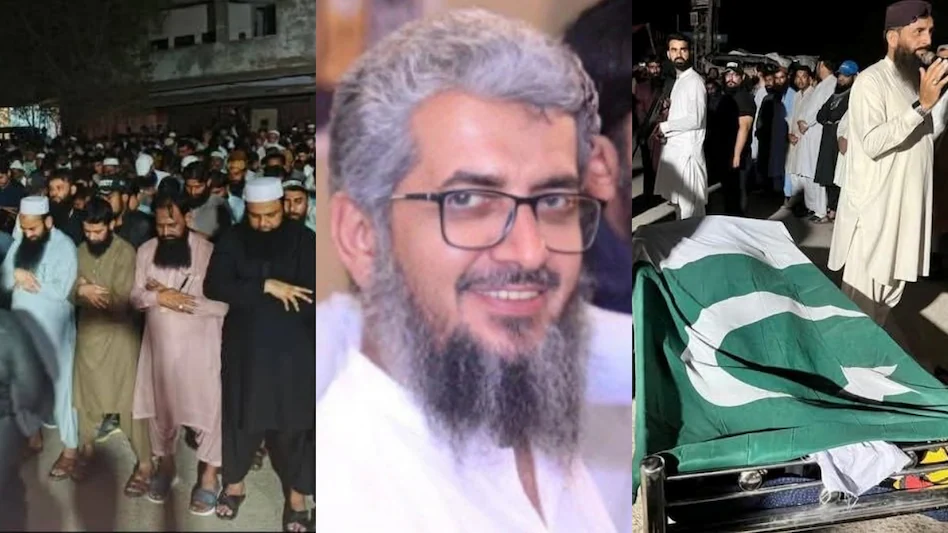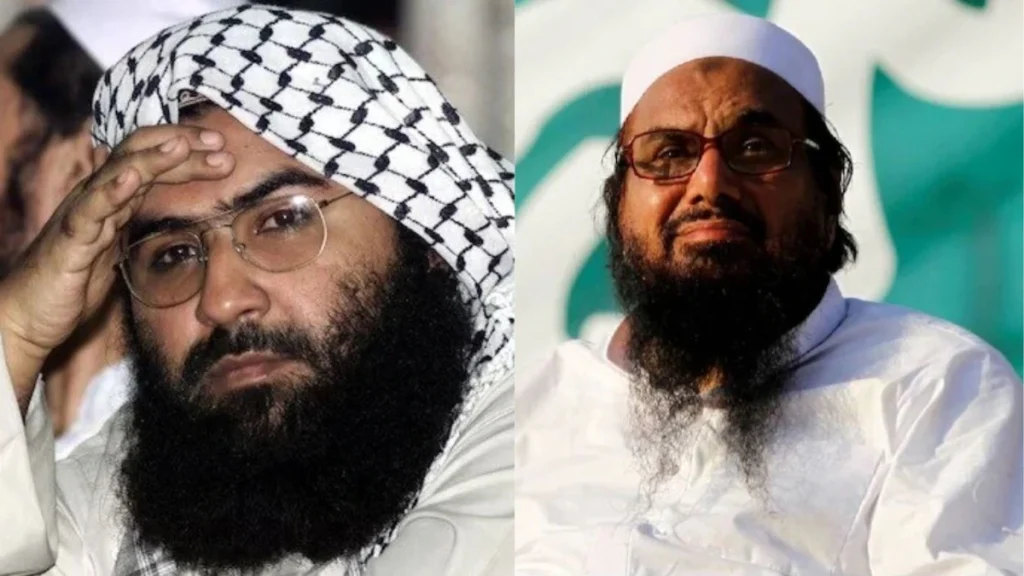
The recent condolence meeting held in memory of Saifullah, a figure linked with extremist activities, has once again thrown into sharp relief the shadowy and dangerous relationship between Pakistan’s military establishment and various terrorist organizations operating within and beyond the country’s borders. This gathering, ostensibly a somber tribute to Saifullah’s death, rapidly transformed into a stage for virulent speeches against India and the world’s efforts to counter militancy, unmasking the continued patronage and support terrorist groups receive from Pakistan’s army.
This comprehensive report delves deep into the significance of this meeting, the implications for South Asia’s fragile security environment, and the broader geopolitical ramifications. We analyze the strategic motives behind this nexus, explore the human toll of these alliances, and examine how the international community grapples with the complex challenge of state-supported terrorism.
The Context of Saifullah’s Condolence Meeting: A Platform for Propaganda and Hostility
To fully understand the gravity of the situation, it is essential to examine the setting of Saifullah’s condolence meeting. Far from being a private or peaceful event, the gathering drew individuals with explicit links to extremist factions and those believed to represent or sympathize with Pakistan’s military intelligence agencies. The speeches delivered were laced with aggressive rhetoric targeting India and lauding militancy as a legitimate form of resistance.
The open celebration of Saifullah’s militant legacy and the overt anti-India propaganda highlight how such events serve dual purposes. They act not only as commemorations but also as recruitment and morale-boosting forums. This calculated use of public mourning rituals to push political and ideological narratives reflects a broader pattern seen in Pakistan’s handling of terrorism and proxy warfare.
The meeting exposed a brazen disregard for international norms and the fragile peace efforts between India and Pakistan. Instead of fostering reconciliation, the rhetoric fueled further animosity and reinforced divisive agendas that threaten to plunge the region into further conflict.
Unveiling the Deep-Rooted Nexus Between Pakistan Army and Terror Groups
One of the most significant takeaways from this event was the explicit confirmation of a longstanding but covert alliance between Pakistan’s military and various terrorist groups. For decades, intelligence agencies and defense forces within Pakistan have been accused of supporting militant outfits such as Lashkar-e-Taiba (LeT), Jaish-e-Mohammed (JeM), and others.
This alliance has operated under a veil of secrecy, with military officials publicly denying any association while covertly providing funding, training, and logistical support. The condolence meeting laid bare the extent of this complicity, revealing how military networks continue to use terrorist organizations as strategic tools for their geopolitical objectives.
This relationship is not merely a tactical arrangement but a deeply embedded strategy within parts of Pakistan’s security apparatus. It allows for plausible deniability on the international stage, while simultaneously enabling Pakistan to maintain pressure on India and influence outcomes in contested regions like Kashmir.
Historical Roots and Evolution of Military-Terrorist Collaboration
To grasp why this nexus persists, it is important to consider its historical evolution. The roots of Pakistan’s military support for militancy date back to the late 1970s and 1980s, particularly during the Soviet-Afghan War. During that time, Pakistan’s Inter-Services Intelligence (ISI) emerged as a key player in channeling support to Afghan Mujahideen fighters, backed by the United States and Saudi Arabia.
This period entrenched a military culture that viewed the use of irregular forces and proxies as a legitimate extension of national defense. Following this, the approach was adapted to the Kashmir conflict, where militant groups were nurtured to challenge Indian sovereignty and destabilize the region.
Despite global condemnation and several attempts to curb these activities, the military-terrorist alliance has endured, morphing with the geopolitical landscape but remaining fundamentally intact. The recent condolence meeting serves as a stark reminder that these networks are far from dismantled.
Implications for India’s Security and South Asian Stability
The revelations from the condolence meeting have profound implications for India’s national security and the broader peace prospects in South Asia. India has been the primary victim of cross-border terrorism emanating from groups supported by Pakistan’s army and intelligence services.
The public platform for extremist rhetoric signals that the threat is not only active but also institutionalized. It undermines trust between the two countries and complicates diplomatic dialogues aimed at resolving long-standing disputes.
Furthermore, the persistence of such alliances perpetuates a cycle of violence that transcends borders, with terror attacks causing widespread civilian casualties, economic disruption, and social instability. These outcomes strain India’s internal security mechanisms and divert valuable resources from developmental priorities.
The impact also resonates beyond India, as the wider South Asian region remains vulnerable to the spillover effects of terrorism. Countries such as Afghanistan, Bangladesh, and even parts of Central Asia have faced destabilization linked to militant networks with Pakistani connections.
The International Community’s Dilemma and Response
The international community has repeatedly urged Pakistan to take concrete steps against terrorist organizations operating within its territory. However, events like Saifullah’s condolence meeting illustrate the limitations of diplomatic pressure and sanctions in altering entrenched state behaviors.
Global powers, including the United States, China, Russia, and members of the European Union, face a complex balancing act. Pakistan’s strategic location, nuclear capability, and role in regional stability make it a critical player. Yet, its failure to dismantle terror networks undermines global counterterrorism efforts and poses risks of wider conflict.
International agencies like the United Nations and financial watchdogs continue to monitor and impose restrictions on entities linked to terrorism funding. Despite this, the military-terror nexus persists, challenging the efficacy of current strategies and demanding renewed approaches that combine diplomacy, intelligence cooperation, and economic measures.
The Role of Media and Civil Society in Uncovering and Challenging Terror Networks
The exposure of Saifullah’s condolence meeting’s true nature owes much to the role played by investigative journalism and active civil society groups. Media outlets that pursue fearless reporting bring transparency to events often shrouded in secrecy and state propaganda.
In Pakistan, despite pressures and risks, some journalists and activists have courageously highlighted the links between the military and militant groups, calling for accountability and reform. Similarly, in India and globally, civil society organizations emphasize peacebuilding, dialogue, and the human costs of terrorism.
This dynamic ecosystem of media and advocacy is vital in breaking the silence around such alliances. It helps mobilize public opinion, shape policy debates, and foster international cooperation in counterterrorism efforts.
The Strategic Calculus Behind Pakistan’s Continued Patronage of Militancy
Why does the Pakistan Army continue to support terrorism despite severe international criticism? The answer lies in a complex strategic calculus rooted in perceived security needs and regional rivalries.
Pakistan’s military views terrorism as an affordable and effective tool to challenge India’s conventional military superiority. Proxy wars allow Pakistan to maintain strategic depth in Kashmir and other contested areas without engaging in full-scale war, which could be costly and unpredictable.
Moreover, militant groups serve domestic political purposes, rallying nationalist sentiments and diverting attention from internal governance challenges. However, this strategy comes with risks, including international isolation, economic sanctions, and the possibility of blowback terrorism within Pakistan itself.
The Human Toll: Stories Behind the Headlines
Beyond political analysis and military strategy, it is crucial to recognize the devastating human cost of the nexus exposed at Saifullah’s condolence meeting. Thousands of civilians, soldiers, and innocent bystanders have lost their lives or suffered grievous injuries due to terrorist attacks linked to this nexus.
Families in affected areas live under constant threat, struggling with trauma and loss. Communities are fragmented, economies disrupted, and development stalled. The glorification of violence at the condolence meeting only deepens these wounds, perpetuating a culture that normalizes and even celebrates terror.
These stories of suffering underscore the urgent need for a concerted effort to dismantle the networks behind such violence and foster reconciliation and healing.
Pakistan’s Internal Dynamics and the Challenge of Reform
Within Pakistan, the military’s dominance over national security policy makes reform a complex and sensitive issue. Civilian governments often struggle to assert authority over the powerful military establishment, which views itself as the guardian of Pakistan’s ideology and strategic interests.
Efforts by some civilian leaders to crack down on militancy have met with resistance or limited success. Meanwhile, hardline elements within the military and intelligence services continue to champion support for proxy groups as vital to Pakistan’s defense doctrine.
For meaningful change, internal political will, backed by popular demand for peace and economic progress, is essential. International partners can support this through engagement that encourages reforms without undermining Pakistan’s sovereignty.
Breaking the Cycle: What Can Be Done?
Breaking the dangerous cycle exposed by Saifullah’s condolence meeting requires a multi-layered approach. Pakistan must dismantle the military-terrorist nexus through transparent and verifiable actions, including severing ties with militant groups and prosecuting their leaders.
India and neighboring countries should enhance intelligence-sharing, border security, and diplomatic outreach to isolate and degrade terrorist networks. Simultaneously, confidence-building measures and dialogue aimed at resolving bilateral disputes can reduce incentives for proxy warfare.
The global community must maintain pressure while offering incentives for genuine reforms, balancing sanctions with development aid and diplomatic recognition of positive steps.
Conclusion: The Road to Peace Demands Courage and Commitment
Saifullah’s condolence meeting has spotlighted the enduring and dangerous alliance between Pakistan’s military and terrorist organizations—a nexus that undermines regional peace and threatens global security. While the challenges are formidable, they are not insurmountable.
True peace in South Asia will require courage, honesty, and sustained commitment from all stakeholders. It demands Pakistan to confront and dismantle the structures that enable terrorism, India to pursue peace without compromise on security, and the international community to support constructive engagement.
Only by breaking free from the shadows of terror and mistrust can the region embrace a future of stability, prosperity, and shared progress.

